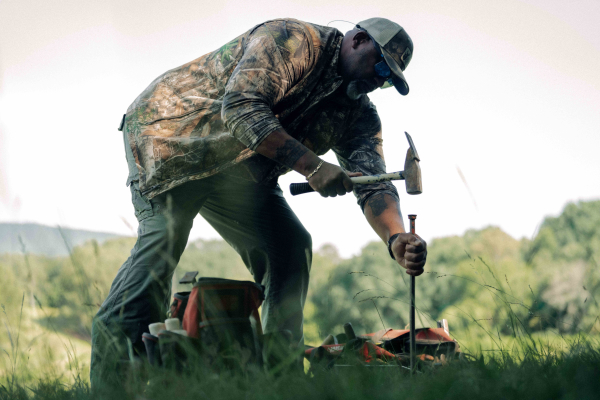
By Craig Springer, USFWS – Office of Conservation Investment
Trapping is among our oldest skillsets—opportunities abound for newcomers
You descend from a long line of trappers. Virtually all your ancestors at some point down the line have snared or trapped animals for food, for clothing, or for tools or trade. Furbearing animals, a category of wildlife under state and federal law, today still provide a litany of opportunity and products. Moreover, trapping is a useful service to wildlife management and public health.
If you enjoy fly fishing, you might cast a streamer or a bug to a trout or a black bass. The fur comes from muskrat or mink. Painters put oil on canvas with badger fur. A western-style hat may have a blend of beaver and mink and wool—a 6X Stetson indicates a good amount of beaver in the blended felt. You can count on it repelling rain. Fur is used in clothing and accessories.
Trapping is highly regulated by the state fish and wildlife agencies; biologists set harvest rates, trapping seasons, bag limits, and restrict trap types. Pittman-Robertson dollars, the federal excise taxes paid by firearms, ammunition, and archery manufacturers on select goods, fund furbearer management. That, coupled with state license fees, give the state agencies the reliable and consistent funding to scientifically manage the health and wellbeing of furbearer populations.
“Trapping is essential to the North American model of wildlife management,” said Bryant White, furbearer program manager for the Association of Fish and Wildlife Agencies. “Wildlife species sought by trappers are abundant and not imperiled. What’s more, trapping is useful in establishing or expanding furbearer populations, or reducing predators that affect the status of threatened or endangered species.”
Regulated trapping is a management tool that ensures the sustainable harvest of a wildlife resources. Humans have always looked to the land to harvest wildlife for their households, including via trapping.
“Licensed trappers also perform a public service by addressing property damage and public health situations,” said Dr. Nathan Roberts, Professor of Conservation and Wildlife Management at the College of the Ozarks. “Regulated harvest of beaver and bobcat, muskrat and mink, coyote, raccoon, and skunk and others—it is trappers who keep furbearer populations in check. That dampens the damaging impact of disease outbreaks in wildlife populations.”
Trapping lessens human-wildlife conflicts such as reducing encounters or lessening property damage. Beavers gnaw on trees for food and the structural raw material for lodges and dams. A property owner may not want ornamental trees to be decimated by beavers, or cropland, roads, septic systems, or wells damaged by waters backed up by the aquatic mammal.
The Association of Fish and Wildlife Agencies recognizes that trapping has its utility in wildlife management and the public good coming from an outdoor pursuit and lifestyle practiced by many. A workgroup of wildlife professionals convened by the Association developed best management practices to improve trapping techniques, ensuring they are humane, efficient, and safe. The practices guide trappers, wildlife biologists, and management agencies to promote better wildlife management, public support for trapping, and ensuring animal welfare.
Funded by both the federal and state agencies, trap testing has taken place during regulated trapping seasons since 1997. The best management practices are informed by a large body of scientific research:
• More than 600 different trap types are field-tested in the United States.
• 41 states have been directly involved in the project, and all 50 states support it.
• Data collected for 23 furbearer species such as badger, beaver, bobcat, Canada lynx, coyote, fisher, fox, marten, mink, muskrat, nutria, opossum, raccoon, ringtail, river otter, striped skunk, weasels, and wolf.
• More than 5,000 wildlife professionals attended continuing education courses providing in-depth information about the role of regulated trapping in wildlife conservation and best management practices.
• Individual trappers and representatives from trapper organizations participated in research and workshops and provided expertise for standardized education programs.
Dr. Matthew Lovallo, a Division Chief with the Pennsylvania Game Commission notes that trapping furbearers is among our oldest advocations.
“Your ancestors relied on trapping to survive. In the 21st Century trapping is strictly regulated through science, and there’s ample opportunity to engage in this outdoor pursuit,” said Lovallo. “Trapping is a craft and a skill set honed through time spent afield. It’s physically demanding and sharpens your mental acuity. To be a successful, a trapper must have intimate knowledge of the habits and habitats of nature’s elusive creatures.”
Furbearer populations are managed by wildlife professionals and laws are enforced by state game wardens. Trapping is safe, selective, well-managed and available to the public who want to participate.
To learn more about trapping and conservation funding, visit Partner with a Payer.
— Craig Springer, USFWS – Office of Conservation Investment